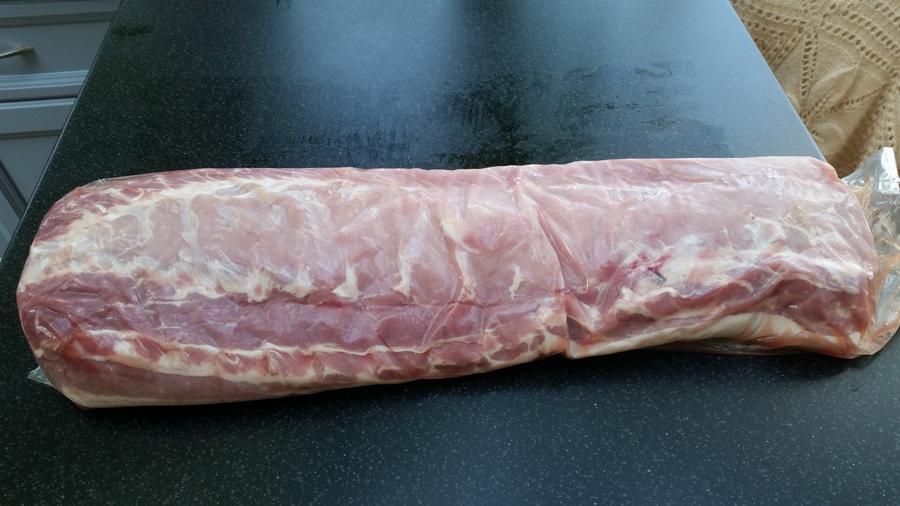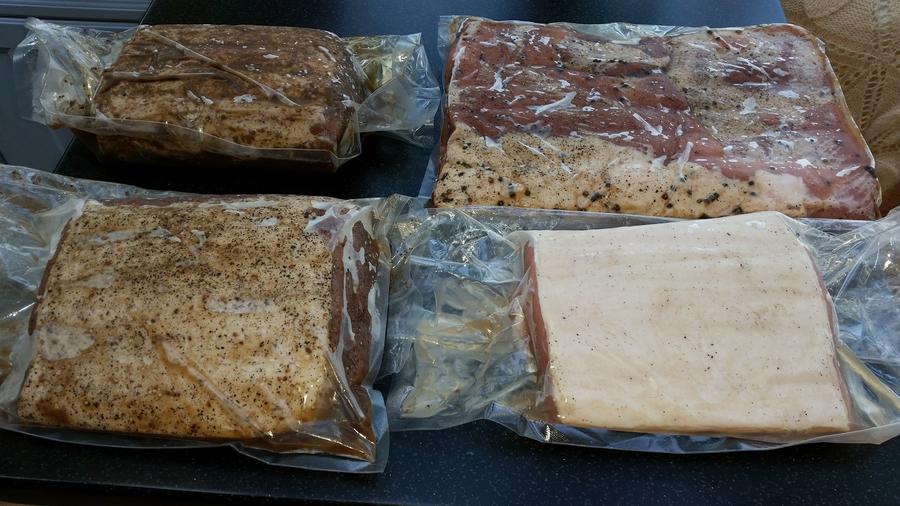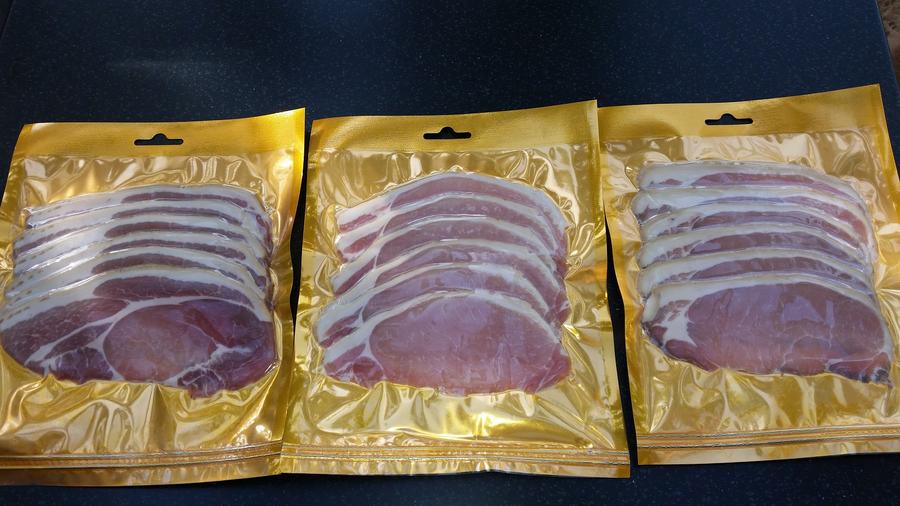I have been meaning to cure some pork loin and make back bacon for a long time but have never got round to it. After a long chat and with some fantastic instruction from Wade I decided to take the plunge and give it a go.
I used a simple dry cure of sugar, salt, nitrite and black pepper which I covered the pork loin in, and then sealed in a bag for 14 days, turning daily to allow the curing process to work it's magic. After a very long 14 days I removed the bacon from the bag and thoroughly rinsed off all the salt/pepper/sugar mixture and dried the meat ready for air drying for 24 hours.
I must admit temptation got the better of me and I couldn't resist cutting a couple of slices off to made a bacon butty! My verdict was great bacon but something was missing.
After 24 hours air drying in the fridge my bacon was ready for smoking. I cold smoked the bacon for 24 hours using Apple dust, and the end result was a great tasting bacon with a fantastic smokey apple flavour. I can honestly say it was the best bacon I have ever eaten. Wade & Steve were correct (as always) once you make your own bacon you will never go back to shop bought again.
Needless to say I have another pork loin in the fridge curing. If you have never tried making your own bacon you don't know what you are missing.
One of the members on the main forum has an app called ismokehog and the app works out all the calculations for your salt/sugar/nitrite, and is available from the Istore or the following link http://www.appszoom.com/iphone-app/ismokehog-owkoj.html
I used a simple dry cure of sugar, salt, nitrite and black pepper which I covered the pork loin in, and then sealed in a bag for 14 days, turning daily to allow the curing process to work it's magic. After a very long 14 days I removed the bacon from the bag and thoroughly rinsed off all the salt/pepper/sugar mixture and dried the meat ready for air drying for 24 hours.
I must admit temptation got the better of me and I couldn't resist cutting a couple of slices off to made a bacon butty! My verdict was great bacon but something was missing.
After 24 hours air drying in the fridge my bacon was ready for smoking. I cold smoked the bacon for 24 hours using Apple dust, and the end result was a great tasting bacon with a fantastic smokey apple flavour. I can honestly say it was the best bacon I have ever eaten. Wade & Steve were correct (as always) once you make your own bacon you will never go back to shop bought again.
Needless to say I have another pork loin in the fridge curing. If you have never tried making your own bacon you don't know what you are missing.
One of the members on the main forum has an app called ismokehog and the app works out all the calculations for your salt/sugar/nitrite, and is available from the Istore or the following link http://www.appszoom.com/iphone-app/ismokehog-owkoj.html






















